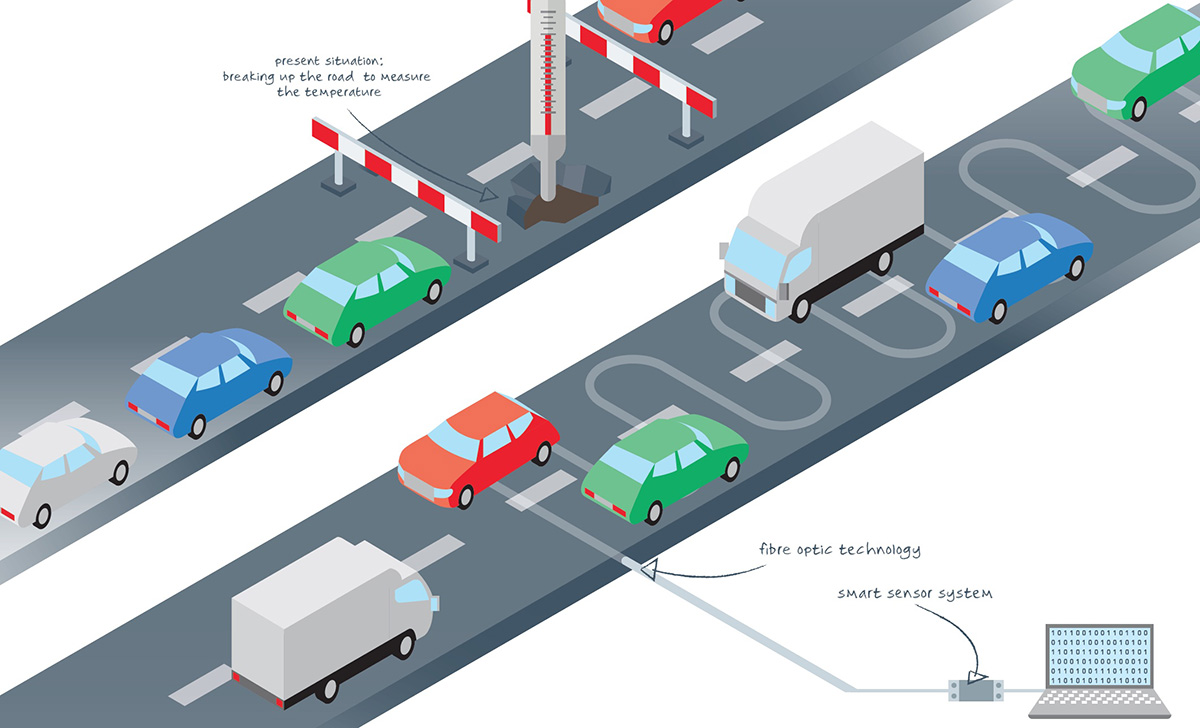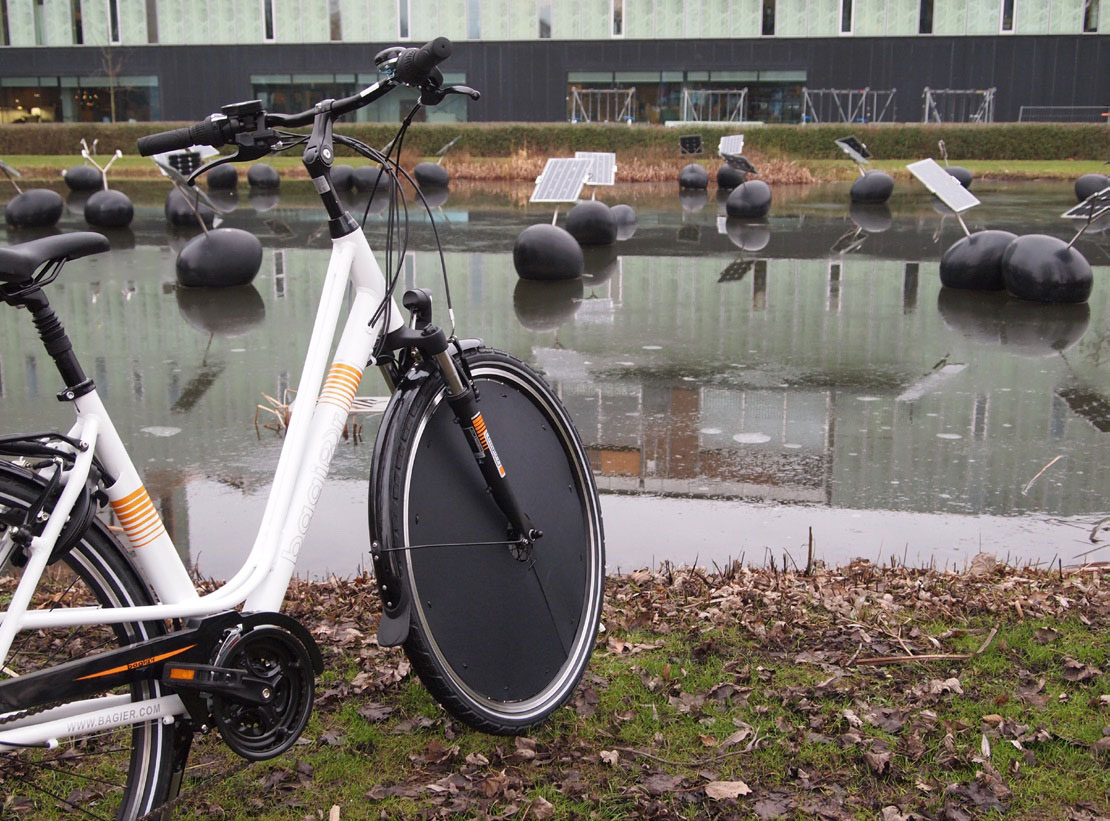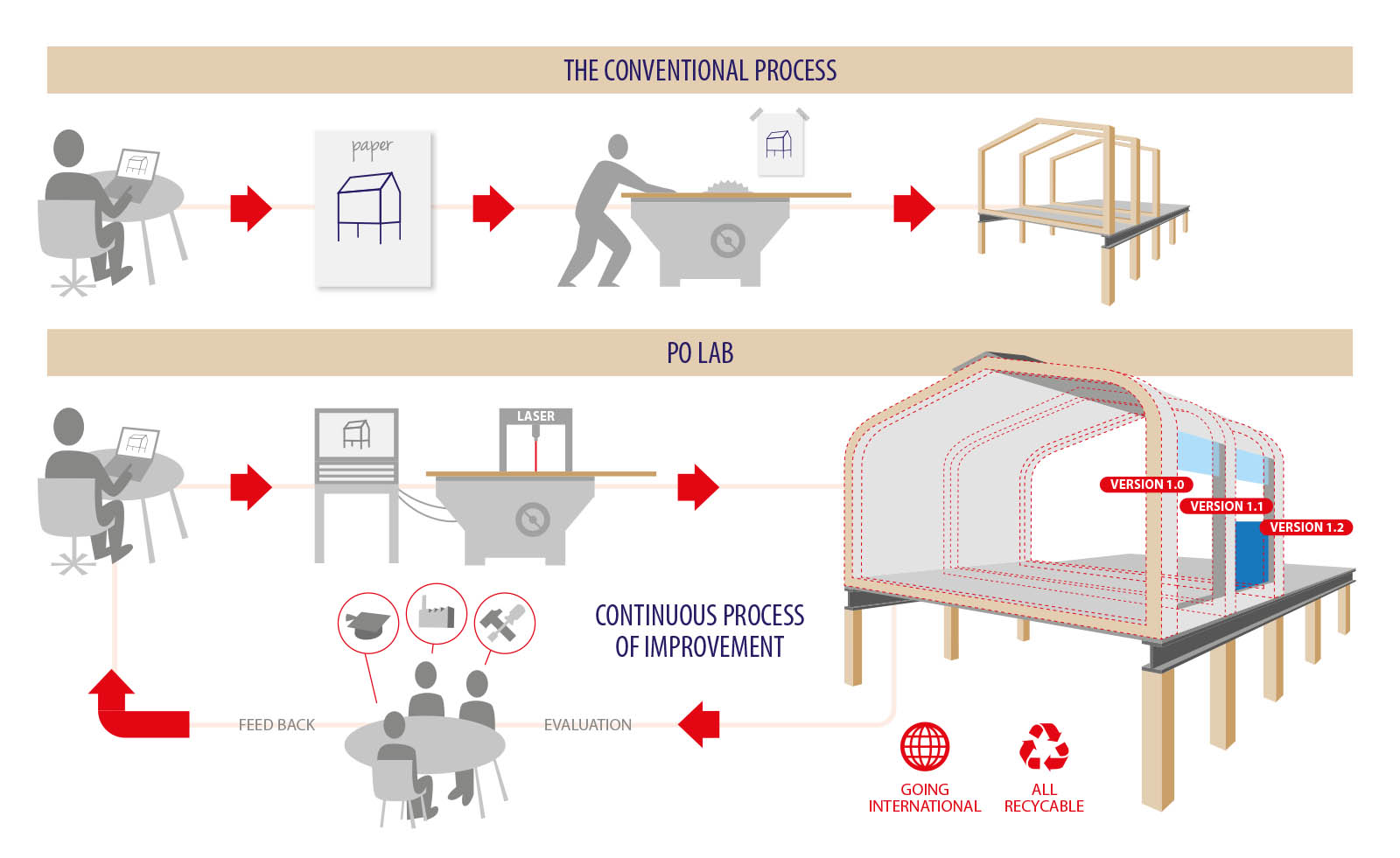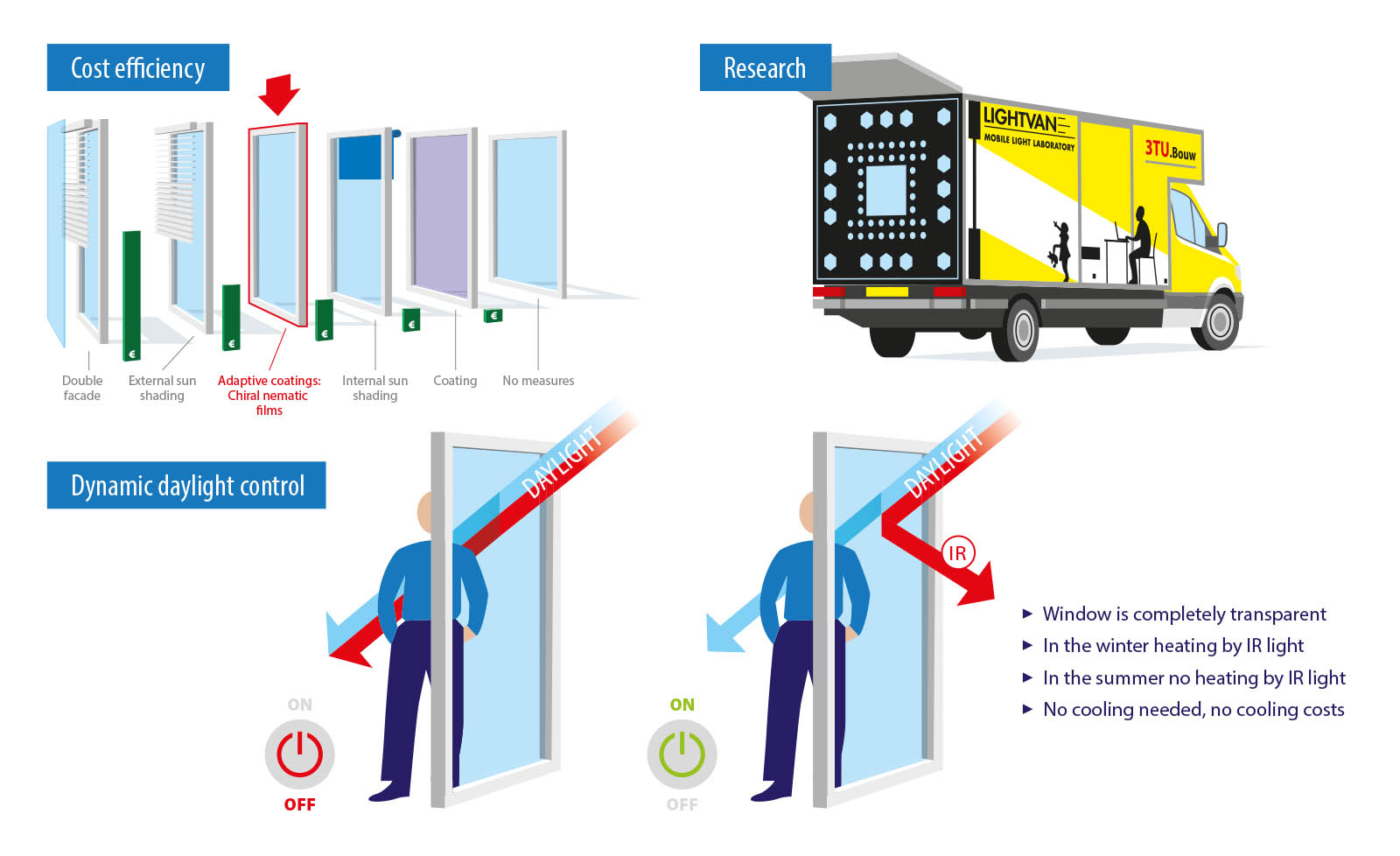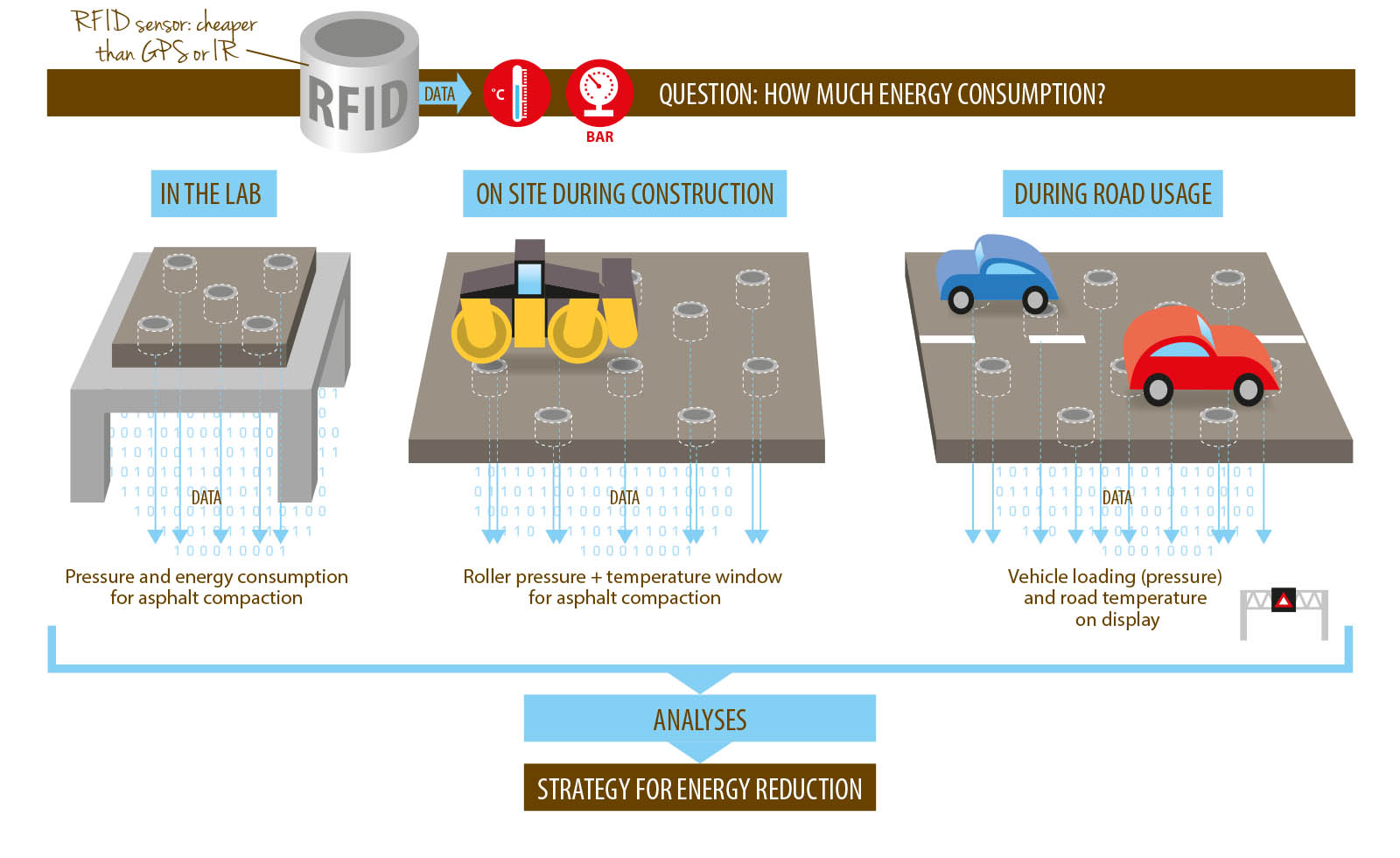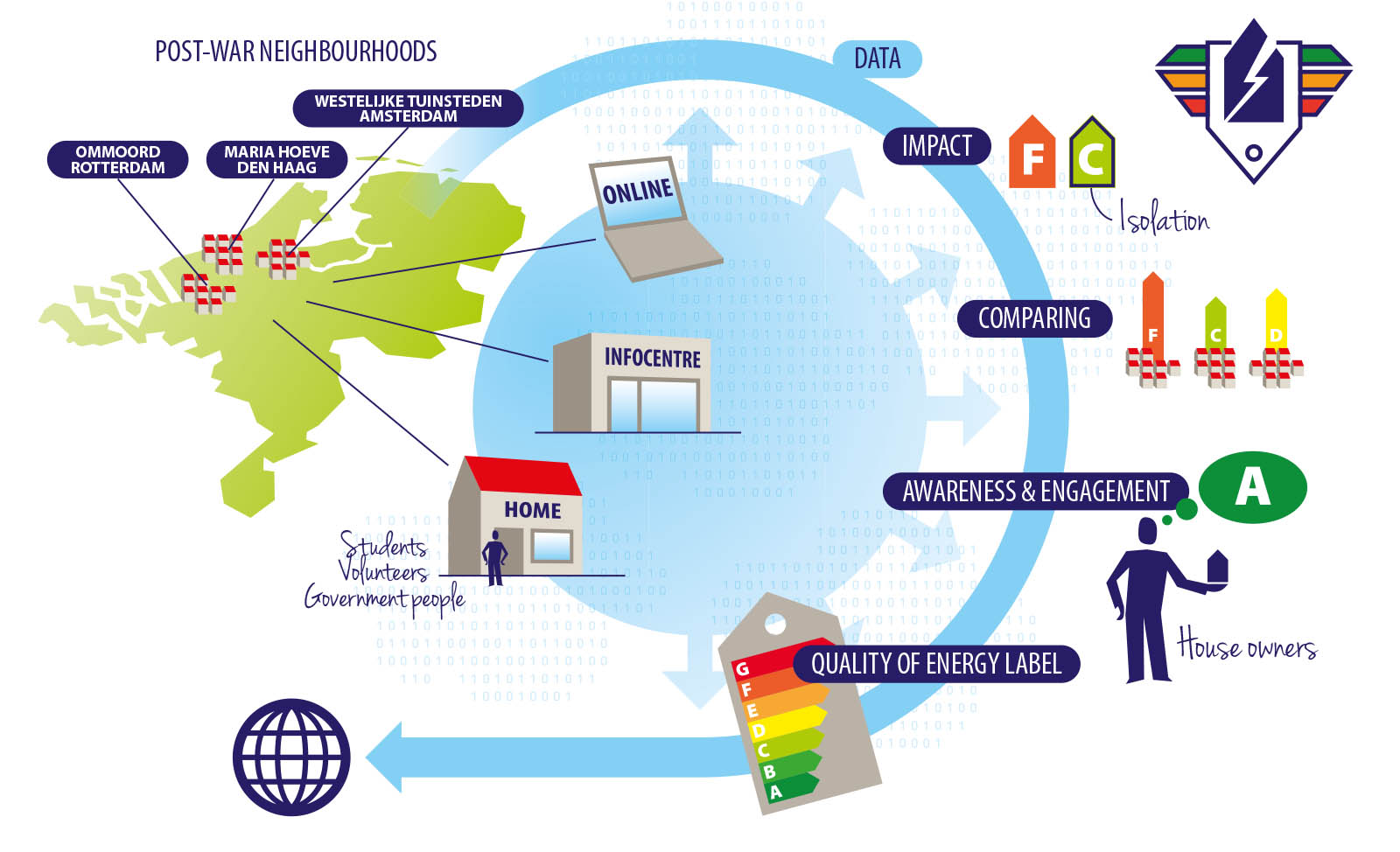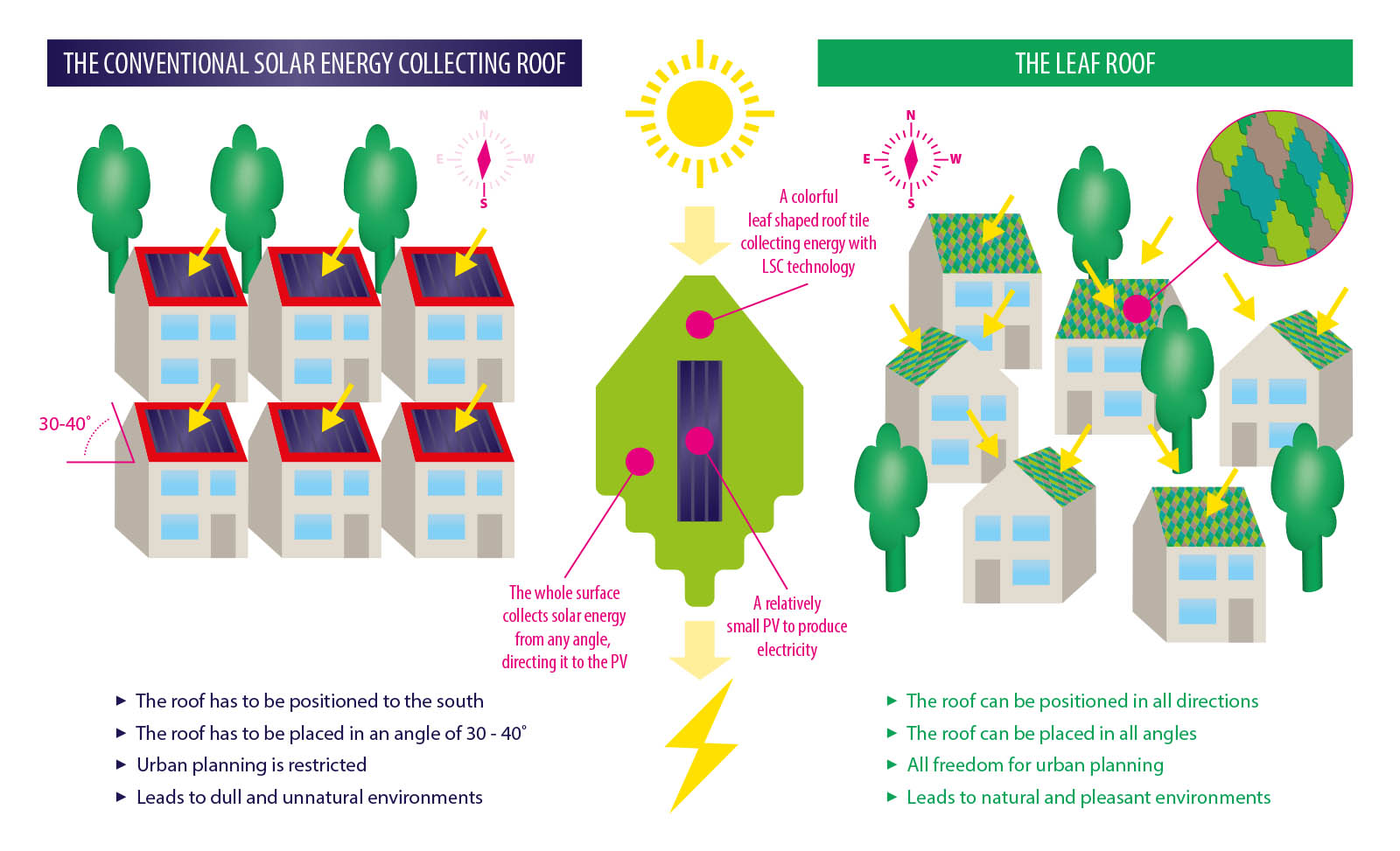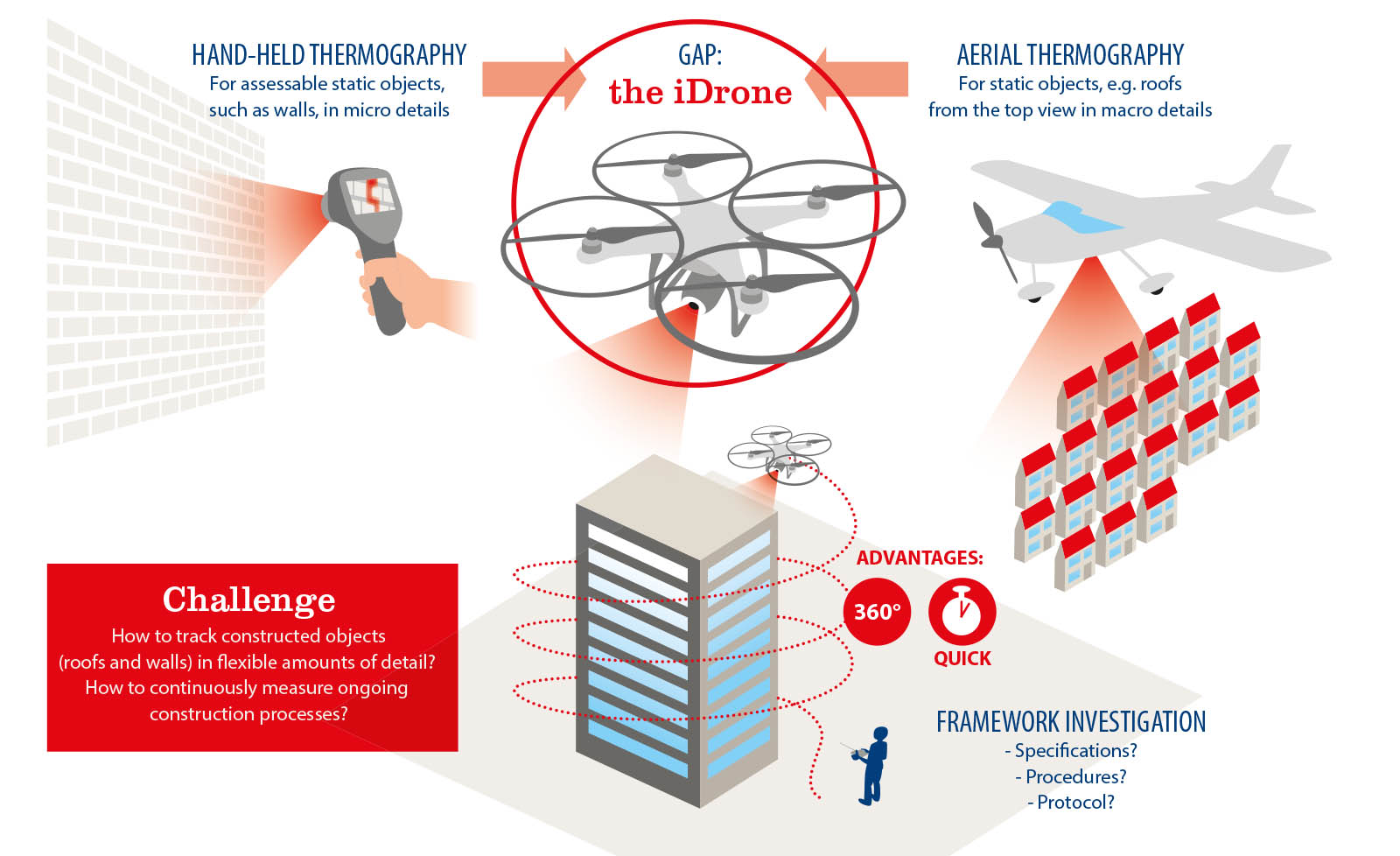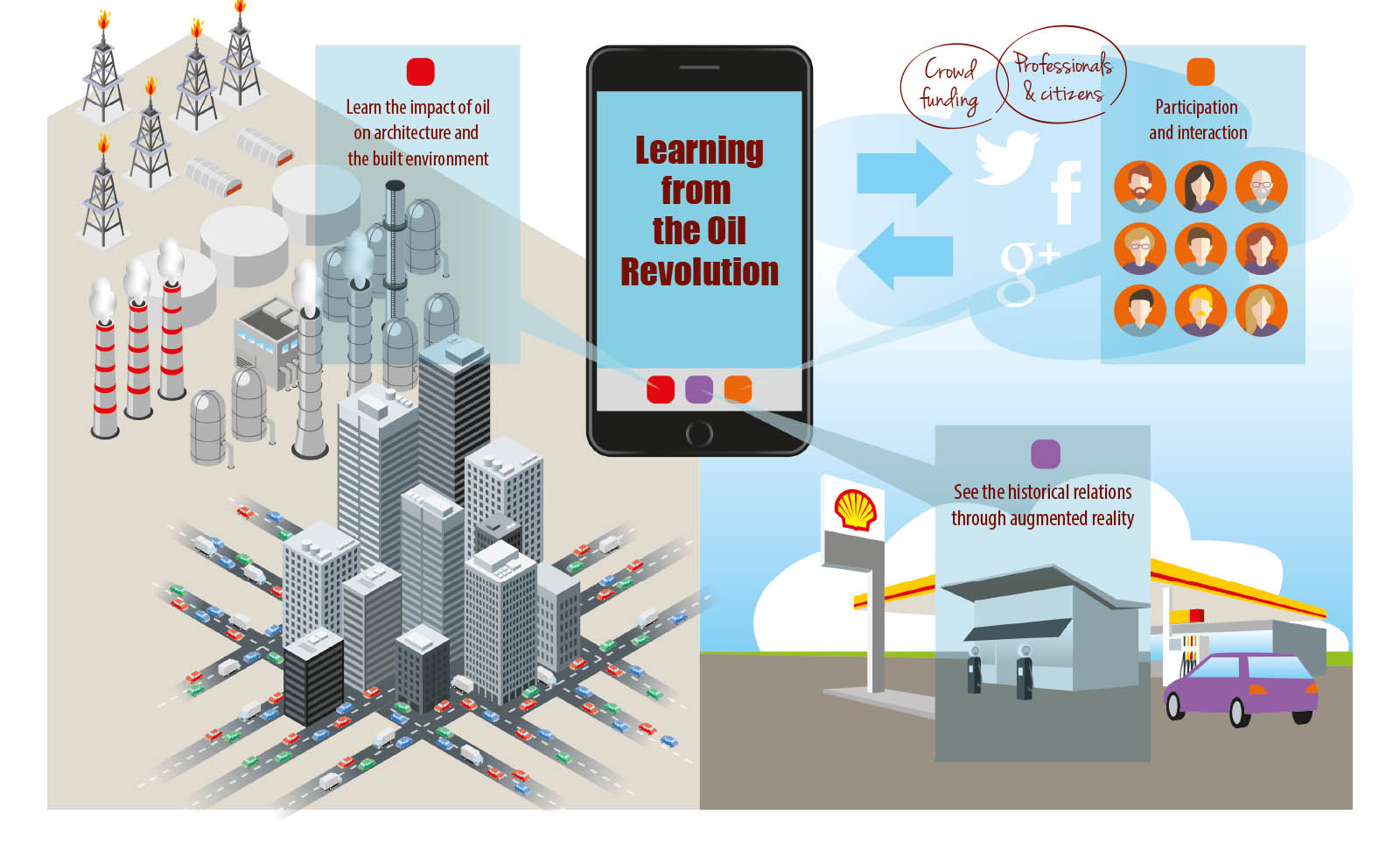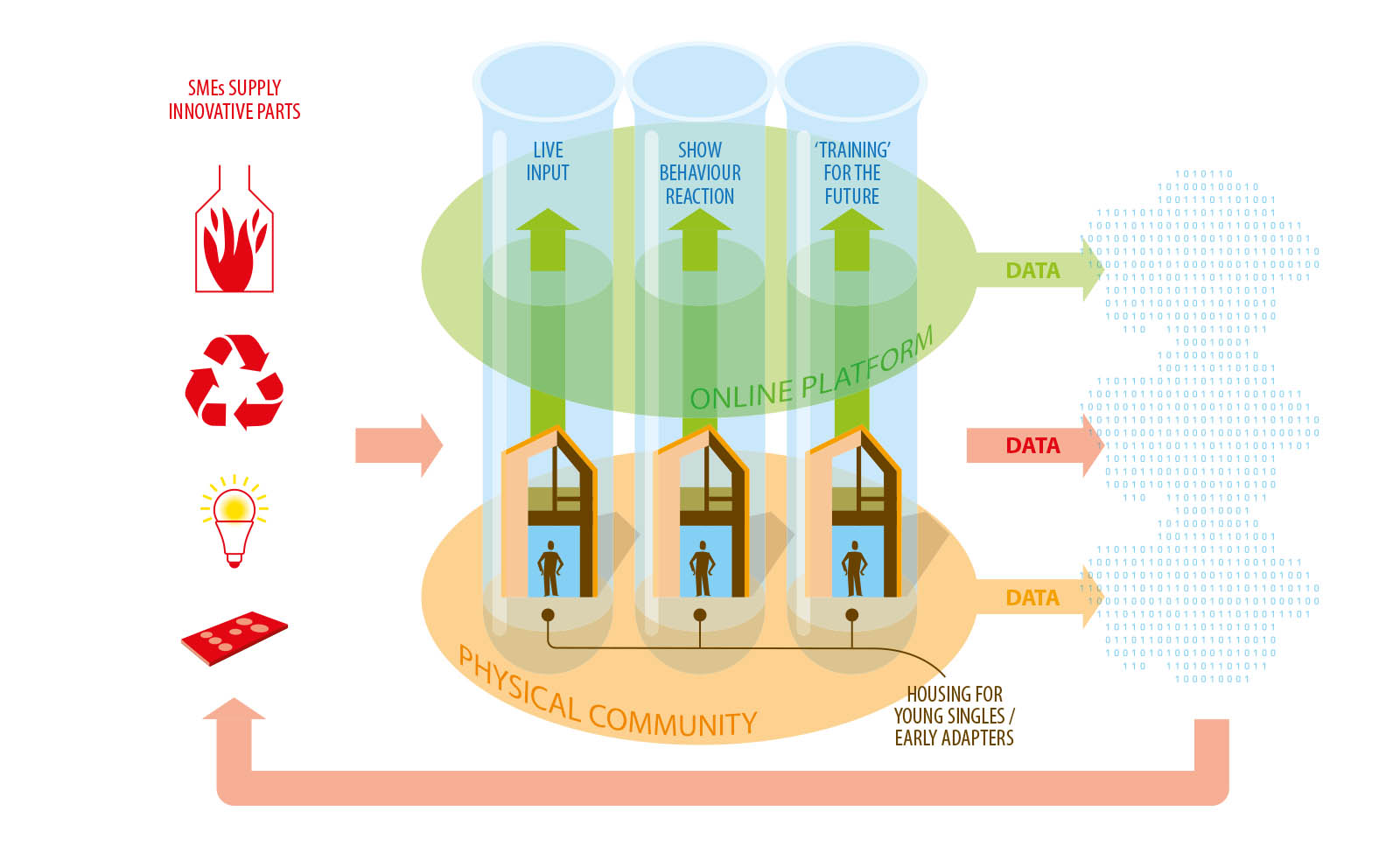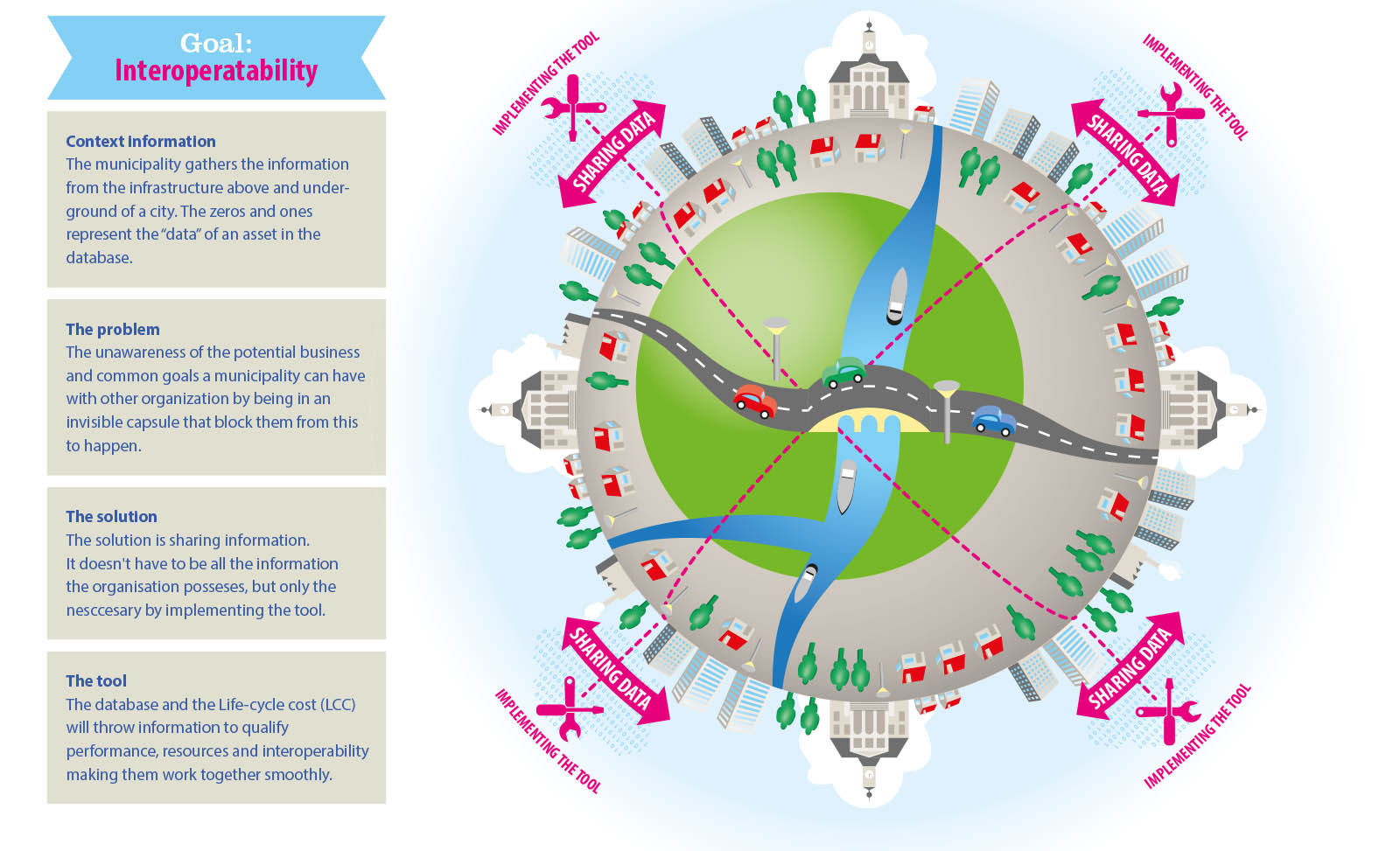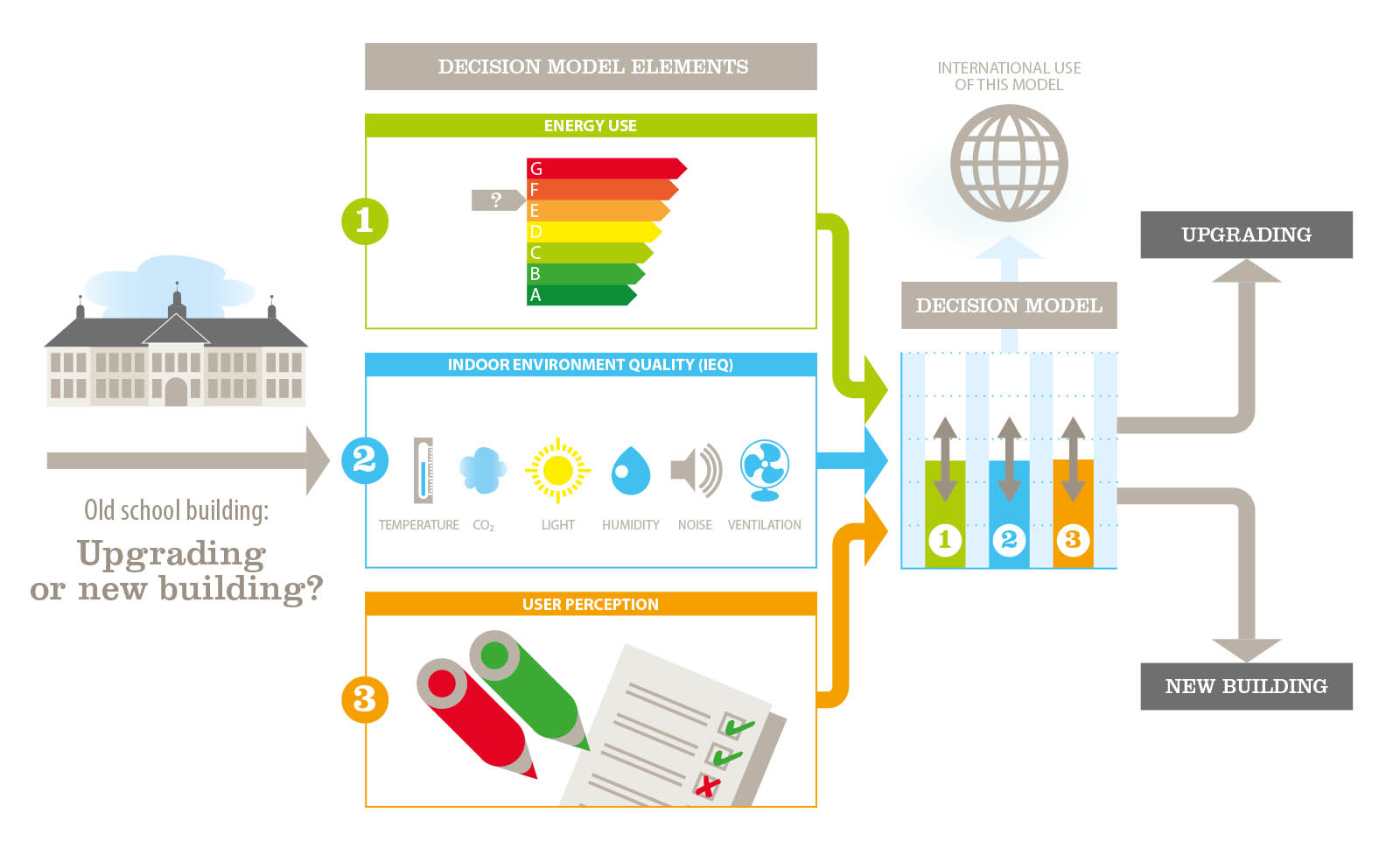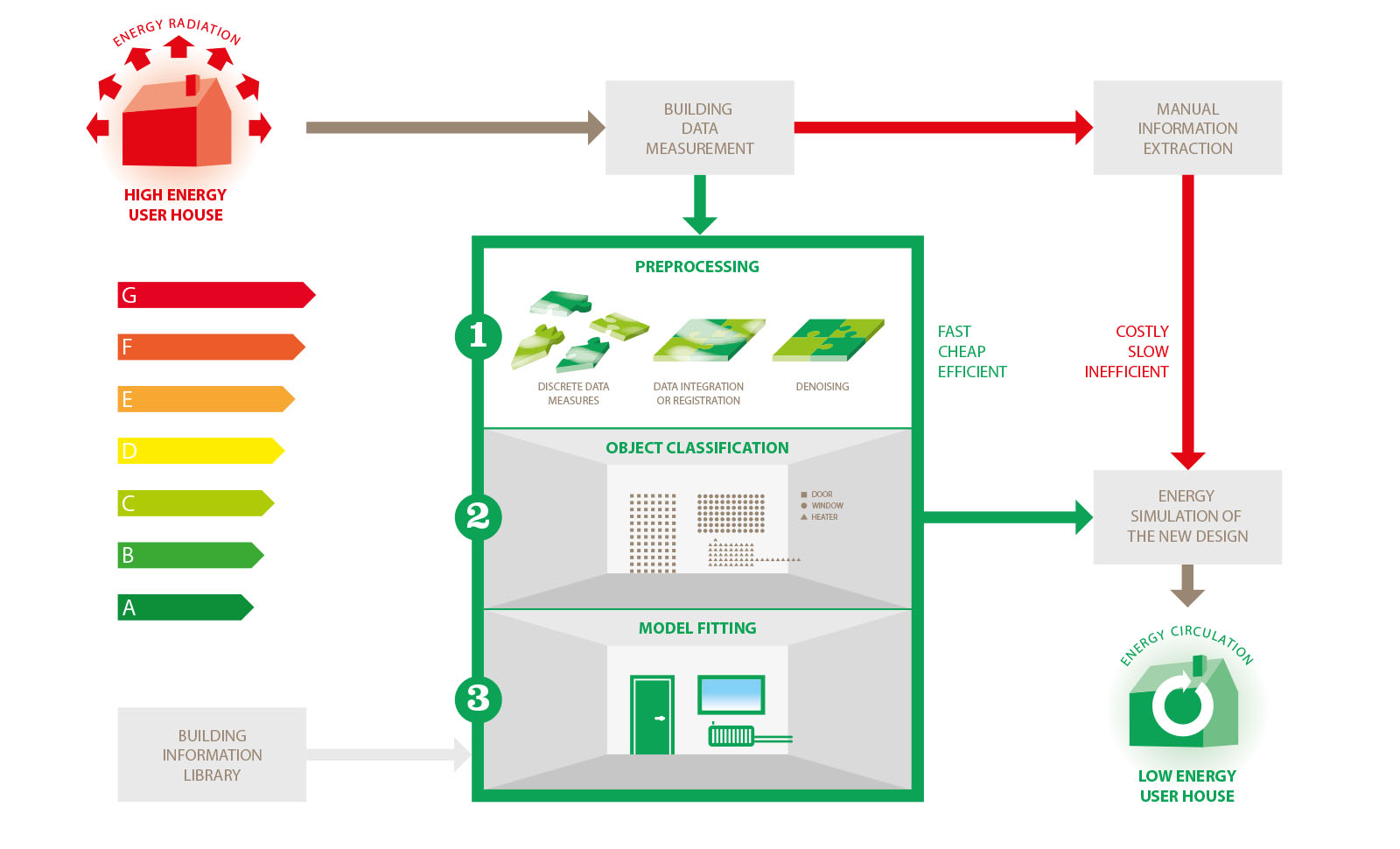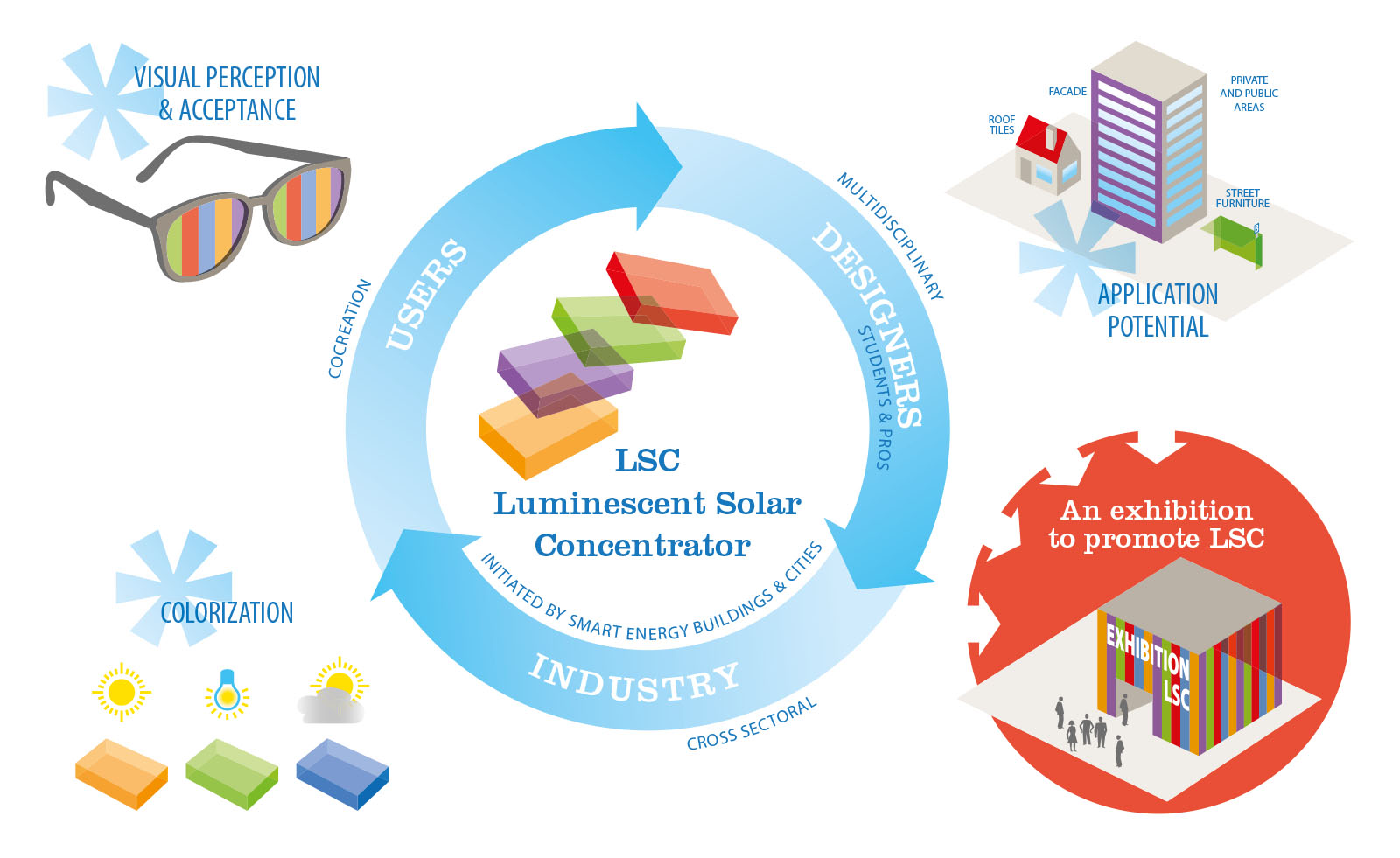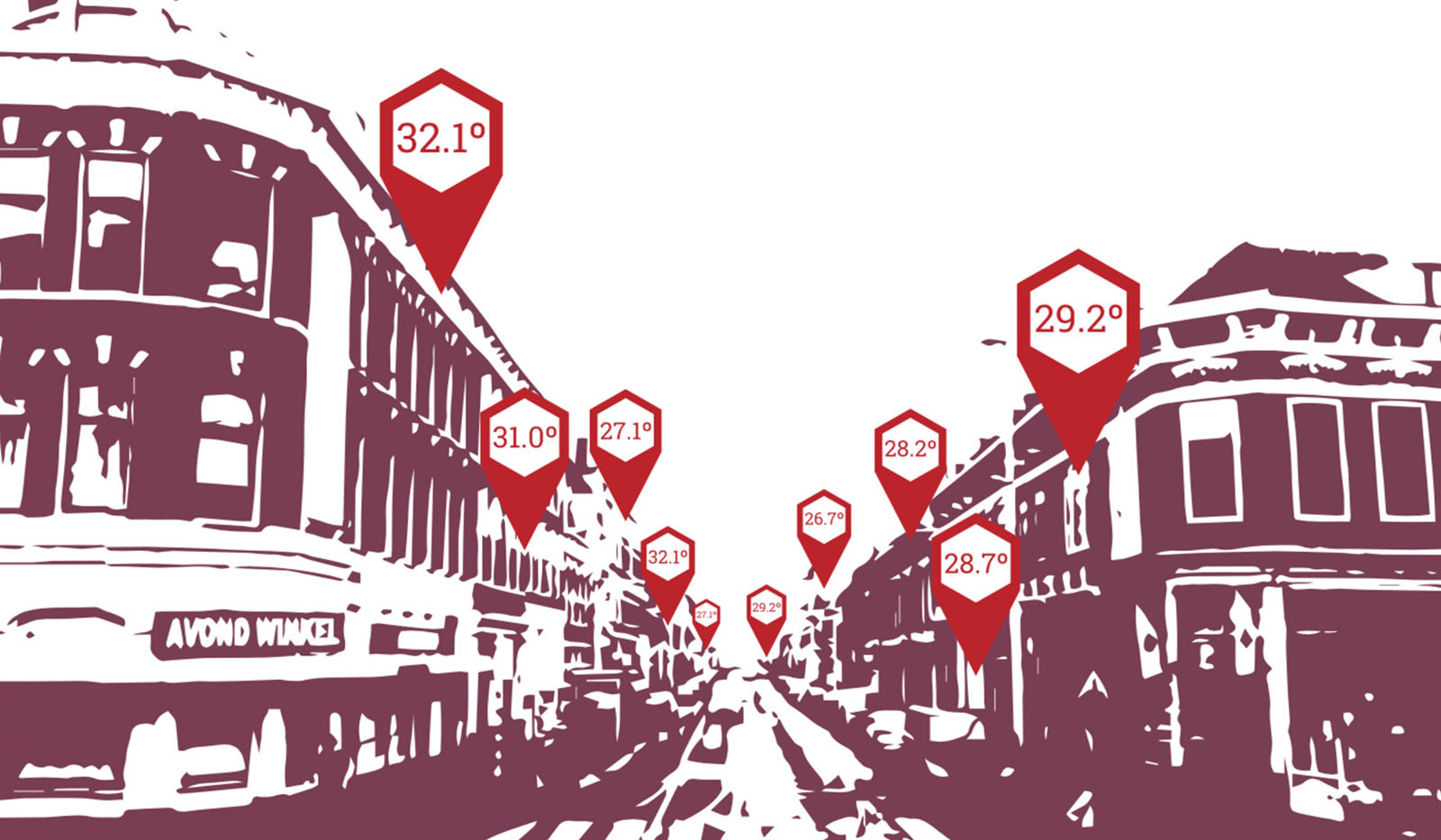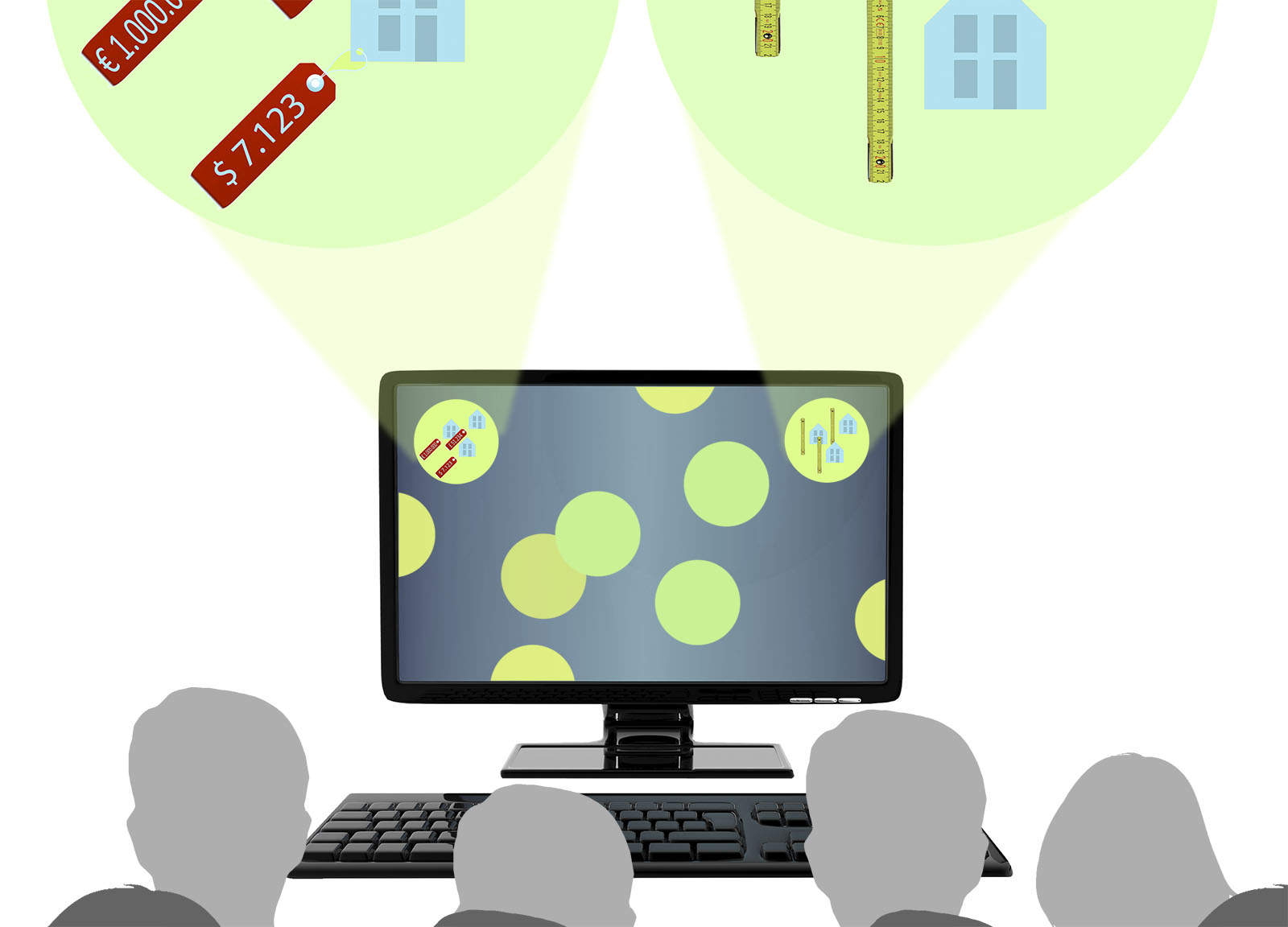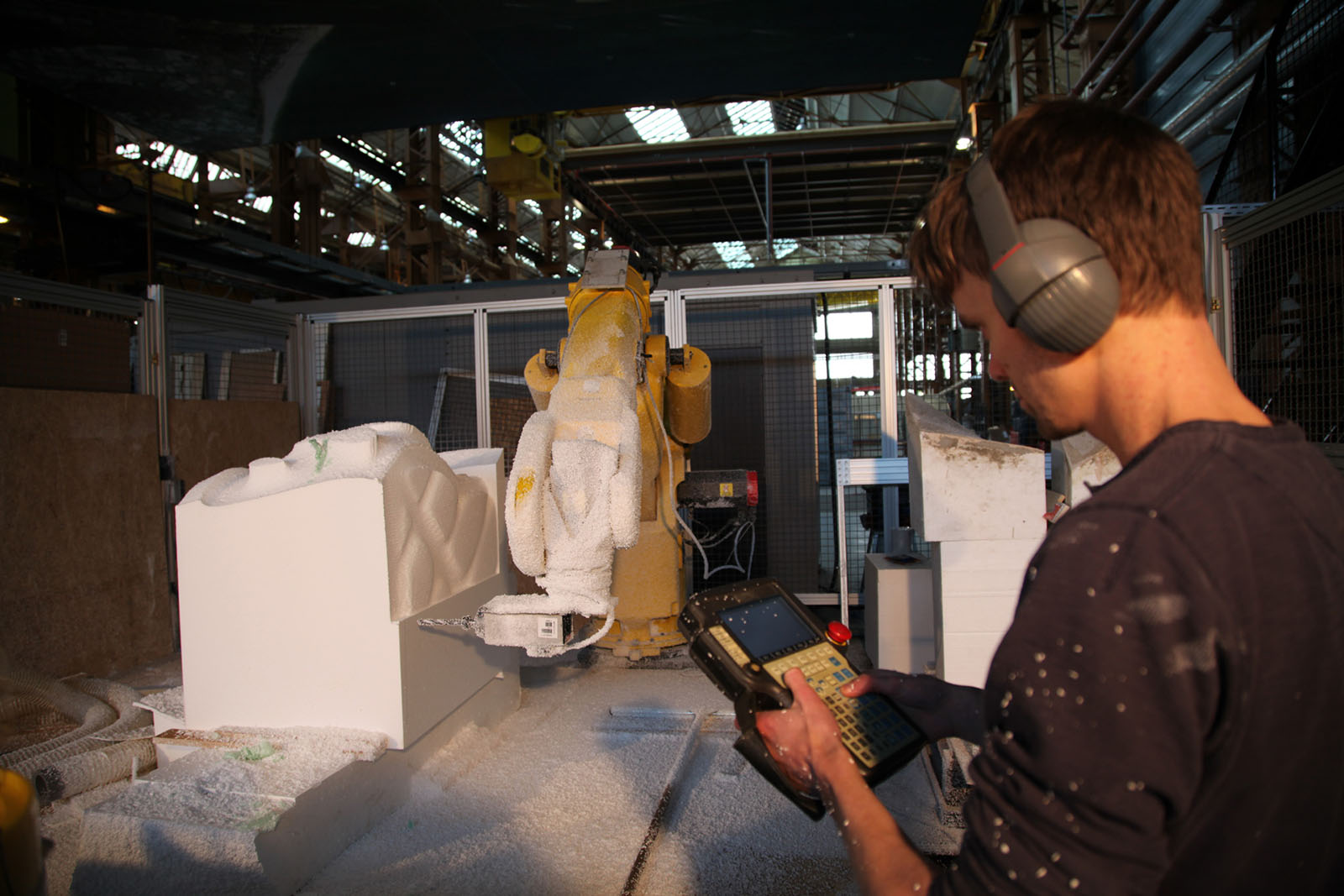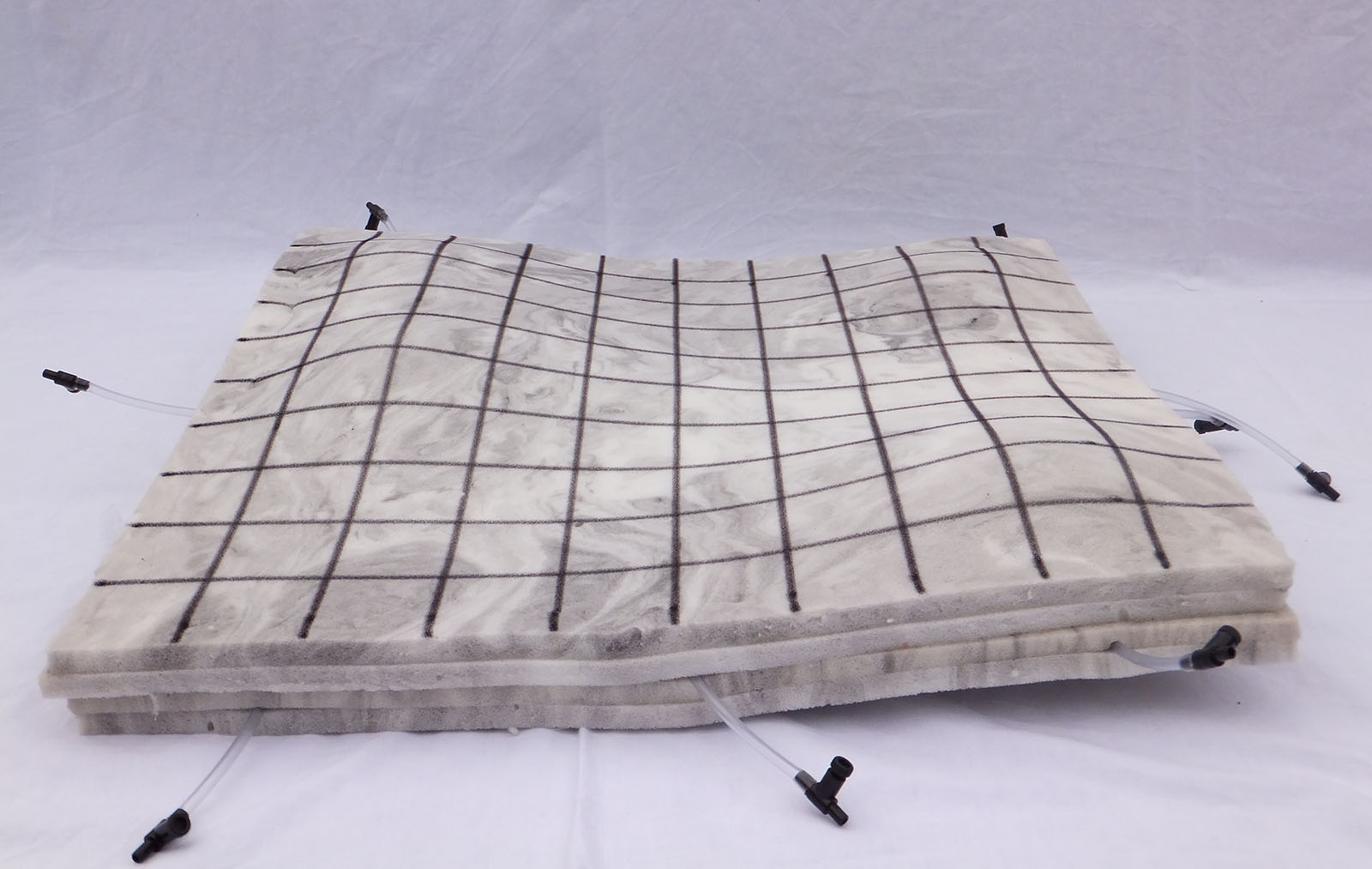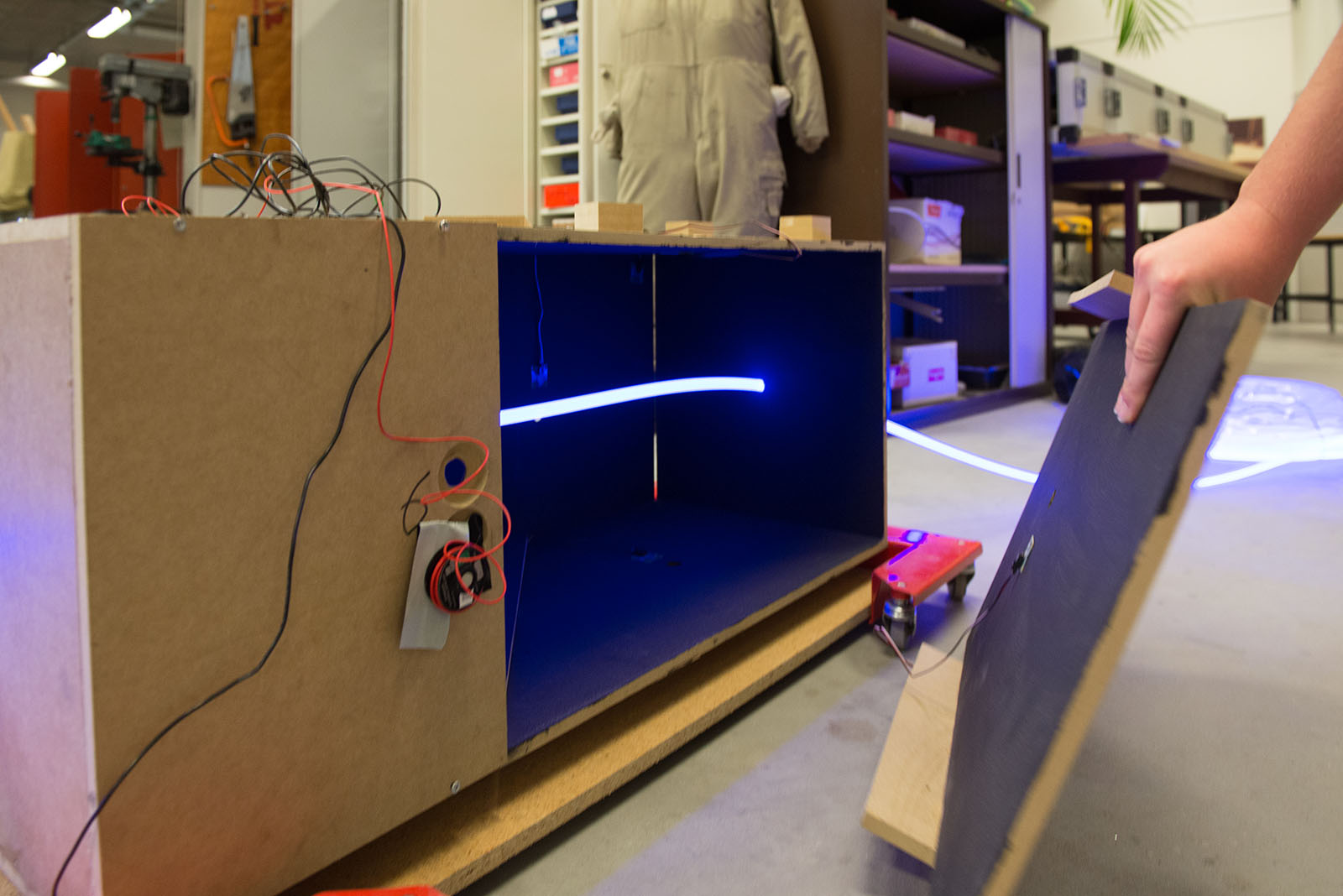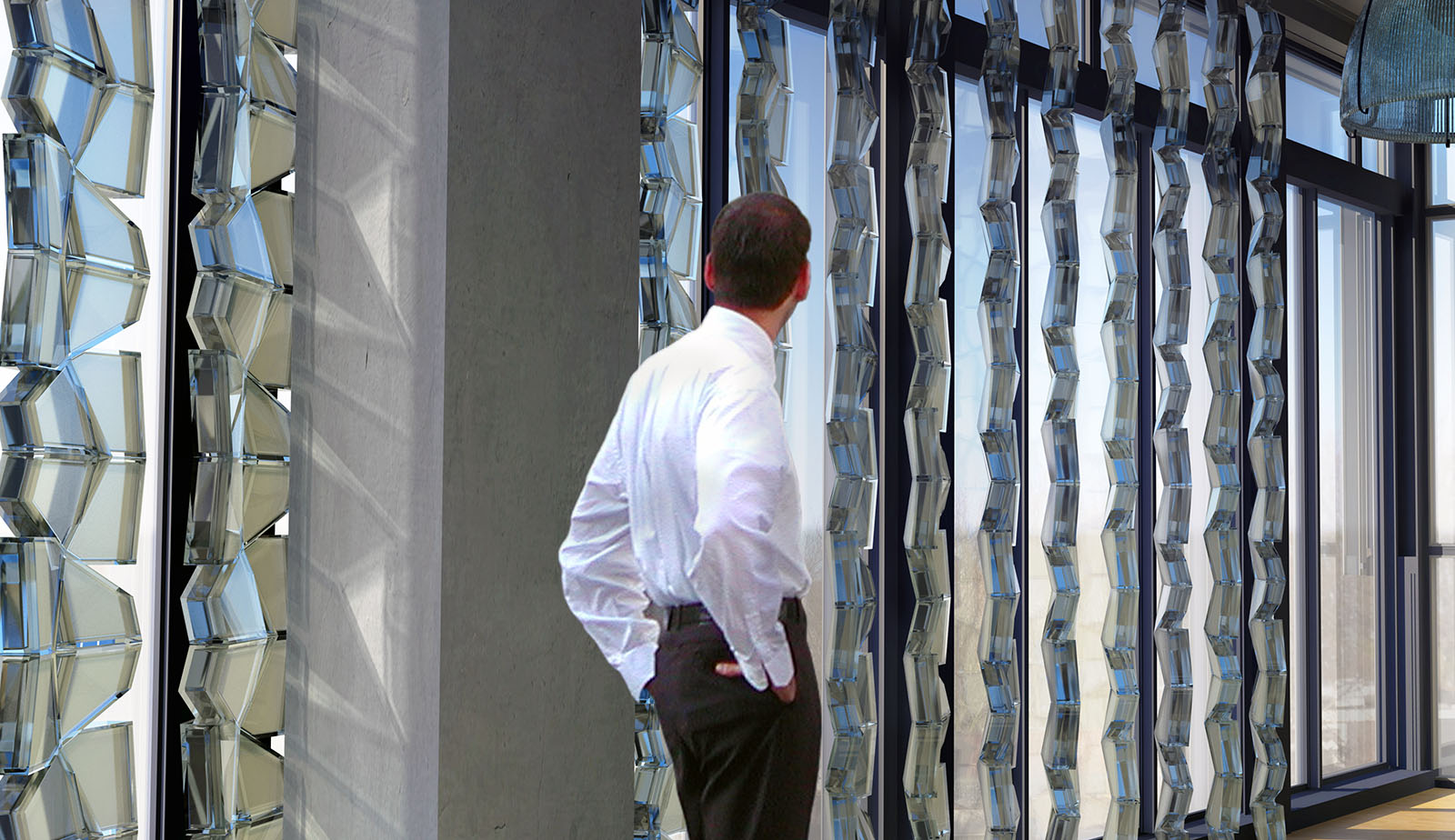Energy Innovation
All Items
-
The application of structural glass as the principal material in restoration and conservation practices is a distinguishable, yet discreet approach. The transparency of glass allows the simultaneous perception of the monument at both its original and present condition, preserving its historical and aesthetical integrity. Concurrently, the material’s unique mechanical properties enable the structural consolidation of the monument. As a proof of concept, the restoration of Lichtenberg Castle is proposed. Solid cast glass units are suggested to complete the missing parts, in respect to the...
-
The Fibre Bragg Gratings (FBG) technology based on integrated photonics, offers specific benefits including thermal mapping, damage detection, shape- and distributed sensing. This makes it useful for determining pavement behaviour during extreme weather conditions e.g. freeze-thaw cycles when harsh winter conditions could damage the asphalt surfacing layer. However, the harsh construction environment and traffic loading highlights the high-risk challenge of installing the sensor into the asphalt layer in a noninvasive manner so that the key parameters are accurately measured during and...
-
Car traffic causes carbon emissions and air pollution and has negative effects on public health and quality of life in cities. Solar bikes are an innovative, sustainable transport option that can offer a substitute for car travel. Solar bikes are electric bikes with solar cells that are powered by the sun. This expands their range compared to regular e-bikes as the bikes are charged during the trip and at the destination without electricity. The aim of this project is to understand people’s preferences, conditions for acceptance and experiences with the solar bike. Insight in preferences...
-
PD Lab explores the applications of building sector related product development. PD lab investigates and tests digital production technologies like CNC milled wood connections. It will also act as a platform in its wider meaning to investigate the effects and influences of file to factory production, to explore the potential in the field of sustainability, material use, logistics and the interaction of stakeholders within the chain of the building process.
-
The challenge of the future is to minimize the energy consumption of buildings while maintaining an optimal comfort level in the interior. Controlling the energy streams in and out of the building , and especially daylight management, plays an important role. It deals with many, sometimes conflicting functions of the building:
Generally a maximum of natural lighting is desired to reduce the need for lighting energy which in today’s buildings accounts for approximately 30% of the total electricity demand. But daylight contains a lot of energy. We need to block sun radiation in...
-
Governments, regulatory bodies and road authorities all push for and promote sustainability. Contractors respond with strategies to reduce their carbon footprints. Besides optimising their asphalt production and logistics processes, companies are investing in the development of low energy asphalt mixes.
Warm Mix Asphalt (WMA) is such an asphalt mixture produced at lower temperatures, thereby requiring less energy. It has recently become very popular in the Netherlands with various types of WMA products being developed by construction companies. In essence, the asphalt mix is...
-
3TU Saving Energy Battle (sEB) aimed at charting post-war neighbourhoods in energy saving rankings, and take a first step in a global monitoring tool on resource efficiency. We also tested the new process of energy performance certification, in three post-war neighbourhoods of major Dutch cities: Westelijke Tuinsteden, Amsterdam; Ommoord, Rotterdam; and Mariahoeve, Den Haag.
This monitoring tool and online short courses were developed online. Further, we organized an live event on 28 February 2015, where students and volunteers teamed up to assist building owners with the upload of...
-
Conventional solar energy collection technologies have a lot of limitations with respect to their applicability in the urban environment. The PV cells of the buildings need to be oriented towards the South at a specific angle causing restrictions on urban planning. Moreover, the aesthetics of PV cells are not well suited for building design, creating a generally dull and industrial look in urban environment.
The 3TU Lighthouse Leafroof project focuses on creating a roof design, inspired by the natural shape of leaves. By incorporating the Luminescent Solar Concentrator (LSC)...
-
Although many consider drones to be toys, multiple industries, such as the agriculture and mining industry, already know what advantages professional Unmanned Aerial Vehicles (UAVs) can offer. However, many companies in the construction industry do not seem to be familiar yet with the possible advantages of UAVs for their projects. In our 3TU Lighthouse project “Throw in the I-drone” we, the University of Twente, Delft University of Technology, and BeemFlights, would like to make the construction industry aware of the possibilities UAVs have by demonstrating possible usages, by providing...
-
This project visualizes the history and current presence of oil in our everyday surroundings in order to facilitate long-term urban sustainability and energy innovation. Designers and citizens around the world want buildings and cities to be more sustainable and ecological.
While their initiatives to reduce energy use are relevant, they often concentrate on individual structures rather than larger global flows, and on technological approaches disconnected from history, society, and culture. They fail to build a new ecological mind-set, a widespread popular culture of...
-
This project is focused on providing movable-temporary sustainable housing at derelict locations in cities, for young people / graduates / singles / expats / professionals in the European market. The goal is to act as the missing link between innovative small and medium enterprises in the sustainability and energy efficient sector (SME’s) and their target audiences i.e. residences. It is a new housing concept that provides residential solutions and living lab facilities for innovative energy technologies. It is a solid quality solution at affordable rental price, at central locations...
-
The need for innovative and cost effective approaches for infrastructure maintenance has never been more crucial. In fact, this has been a popular topic in technical reports like the McGraw Hill Construction, the Dutch Cobouw construction magazine and the new multidisciplinary journal “Infrastructure Asset Management” by the Institution of Civil Engineers. The financial status of Industrial Parks (IP) and Business Parks (BP) in the Netherlands, as well as in the rest of the world, has been greatly influenced by the 2007-2008 financial crisis. As a consequence, several IPs and BPs have...
-
A good school environment is paramount to the performance and health of the pupils and teachers. However, the quality of school buildings in the Netherlands is in general not so good, with 80% of them not complying with good practices for the indoor environment, while having high energy costs. When tackling these issues, School Boards around the country have two options: building new facilities, or upgrading the existing ones. Although they usually prefer new buildings, municipalities around the country are promoting the alternative. This presents opportunities for the sustainable...
-
Renovation of existing buildings is known as an essential stage in reduction of the energy loss. Considerable part of renovation process depends on geometric reconstruction of building based on semantic parameters. Following many research projects which were focused on parameterizing the energy usage, various energy modelling methods were developed during the last decade. On the other hand, by developing accurate measuring tools such as laser scanners, the interests of having accurate 3D building models are rapidly growing. But the automation of 3D building generation from laser point...
-
Luminescent solar concentrator (LSC) is a device that has luminescent molecules embedding or topping polymeric or glass waveguide to generate electricity from sunlight with a photovoltaic cell attachment. LSCs can be employed both in small and large scale projects, independent on the direction or angle of the surface with respect to the sun, promising more freedom for integration in urban environments compared to the traditional PV systems. The aim of the SEB&C PDEng project is to investigate the applicability of this innovative technology in the built environment and to bridge the...
-
The 'LIGHTVAN' research aims to optimize the lighting design for healthy schools and modern senior housing and care homes with regards to the use of light as a cheap and important source of energy.
A multi-functional mobile light laboratory was built into a delivery van, the LIGHTVAN. This LIGHTVAN has two clear aims: With this mobile light laboratory we can travel to the living environment of specific groups of people, such as children and seniors, so that they may be subject to specific age-dependent light studies. In this moving laboratory...
-
Sensing Hotterdam recorded the temperature in 1,000 Rotterdam homes and at 300 public spaces in the summer of 2014 in order to outline the links between the urban heat island, the built environment and public health in the city of Rotterdam. The measured outdoor temperature readings point to a clear heat island effect in Rotterdam. Temperatures in homes are generally higher than those in the surrounding area, and also show a large degree of variation. Indoor temperatures are less affected by local outdoor temperatures than we had expected.
-
Information required by practicing architects, engineers, construction managers, building operators, asset managers, owners, and users becomes more and more distributed, detailed, and richer. BIG DATA is on the rise and this trend will not stop. We rather expect that this trend will further accelerate in the upcoming years as;
- more and more sensor technologies will become widely available to access existing conditions in the built environment,
- more and more information streams will be combined for various purposes, e.g. mobile data access information to space use...
-
Robotically Driven Construction of Buildings (RDCB) is an exploration into design to production solutions for robotically driven construction of buildings initiated by the faculties of Civil Engineering and Architecture, TU Delft and Architecture, TU Eindhoven and implemented 2014 within the 3TU Lighthouse framework. The aim of was to involve the disciplines of architecture, robotics, materials science, and structural design in order to integrate knowledge from the individual disciplines and develop new numerically controlled manufacturing techniques and building-design optimisation...
-
The Kine-Mould is a development that makes it easier to manufacture building elements with complex geometry. Since June 2014 the team has been working on a range of solutions and prototypes. Various building materials have been investigated such as concrete, glass and plastic composites. In a joint effort of TU Delft and TU Eindhoven the following prototypes were designed and built:
- One for thermoplastic polymers;
- One for concrete elements;
- One for glass elements;
- Several for inflatable mould surfaces.
Students carried out a...
-
Het is wenselijk dat gebouwen beschikken over voldoende en de juiste mogelijkheden om te ventileren. Buiten de benodigde ventilatievoorzieningen is het echter de bedoeling een gebouw zo luchtdicht mogelijk te maken ten einde comfortklachten en onnodig energiegebruik te voorkomen. In het Bouwbesluit zijn eisen met betrekking tot de luchtdoorlatendheid – het tegenovergestelde van luchtdichtheid – opgenomen. Met betrekking tot een heel gebouw wordt in Art. 5.4 lid 1 het volgende geëist: De volgens NEN 2686 bepaalde luchtvolumestroom van het totaal aan verblijfsgebieden, toiletruimten en...
-
The project set out to proof that a conventional optical fibre lighting system for highlighting the structure of a façade can be operated more energy-efficiently through the substitution of the projector using a metal halide reflector lamp by a laser. This is investigated by looking into the photometric assessment of such systems as well as the electric power draw during operation. In preparation for a potential exterior demonstration installation, an additional focal point of the research was the design and testing of a weatherproof case that provides protection to the laser and the...
-
The DoubleFace project aims at developing a new product that passively improves thermal comfort of indoor and semi-indoor spaces by means of lightweight materials for latent heat storage, while simultaneously allowing daylight to pass through as much as possible. Specifically, the project aims at designing and prototyping an adjustable translucent modular system featuring thermal insulation and thermal absorption in a calibrated manner, which is adjustable according to different heat loads during summer- and wintertime. The output consists of a proof of concept, a series of performance...

